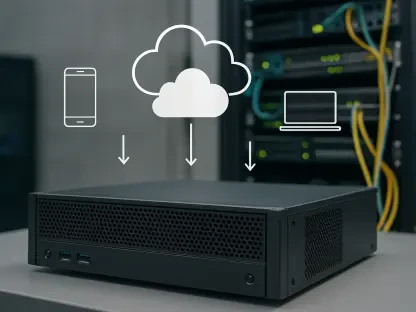Welcome to an insightful conversation with Matilda Bailey, a renowned networking specialist with deep expertise in cellular, wireless, and next-generation solutions. With a keen eye on emerging threats in network security appliances, Matilda has been closely following the latest developments in cybersecurity vulnerabilities. Today, we dive into a critical issue affecting Fortinet’s FortiWeb web application firewall—a vulnerability that has sparked urgent warnings and active exploitation in the wild. Our discussion will explore the nature of this flaw, its impact on users, the response from both Fortinet and federal agencies, and the broader implications for network security.
Can you walk us through the recently disclosed FortiWeb vulnerability, tracked as CVE-2025-64446, and explain why it’s considered so severe?
Certainly. This vulnerability in FortiWeb, a web application firewall by Fortinet, is a serious issue with a CVSS score of 9.1, which highlights its critical nature. It’s described as a relative path traversal flaw that attackers can exploit through crafted HTTP or HTTPS requests. Essentially, this allows remote, unauthenticated attackers to execute administrative commands on the system, potentially gaining full control over the device. The severity comes from the ease of exploitation and the fact that no authentication is required, making it a prime target for malicious actors looking to compromise networks.
Which specific versions of FortiWeb are affected by this vulnerability, and what steps has Fortinet taken to address it?
The flaw impacts a wide range of FortiWeb versions, specifically from 7.0.0 to 7.0.11, 7.2.0 to 7.2.11, 7.4.0 to 7.4.9, 7.6.0 to 7.6.4, and 8.0.0 to 8.0.1. That’s a pretty extensive list, meaning a lot of users are at risk if they haven’t updated. Fortinet has released patches to resolve this in versions 7.0.12, 7.2.12, 7.4.10, 7.6.5, and 8.0.2. They’ve urged customers to upgrade as soon as possible to protect their systems from potential exploits.
Fortinet has confirmed that this vulnerability is being exploited in the wild. What does this mean for users, and how has the company responded to questions about these attacks?
When we say a vulnerability is exploited in the wild, it means attackers are actively using it to target vulnerable systems right now. For FortiWeb users, this is a red alert to prioritize patching and review their configurations for any signs of compromise, like unauthorized admin accounts. Unfortunately, Fortinet hasn’t shared much detail about the nature or scale of these attacks. When pressed for specifics, they’ve focused on their ongoing response efforts and directed customers to their advisory for guidance, emphasizing the need to disable internet-facing HTTP/HTTPS interfaces until updates are applied.
The U.S. cybersecurity agency CISA added this flaw to its Known Exploited Vulnerabilities catalog. Can you explain the significance of this for federal agencies?
CISA’s decision to include this vulnerability in its Known Exploited Vulnerabilities catalog underscores the urgency of the threat. For federal agencies, this means they’re mandated to address the issue under Binding Operational Directive 22-01. Typically, they have three weeks to remediate newly added vulnerabilities, but for this one, CISA has set a tighter deadline of just one week. This shorter timeframe reflects how critical and actively exploited the flaw is, pushing agencies to act swiftly to protect sensitive systems.
Several security firms have reported on the real-world exploitation of this vulnerability. What insights have they provided about the attacks?
Multiple firms have sounded the alarm on this issue, offering valuable observations. One firm noted that the attacks are widespread, targeting FortiWeb appliances indiscriminately across the globe, which shows this isn’t a localized threat. Others have detailed how the exploit enables attackers to create administrator accounts on vulnerable devices, effectively giving them full control. There was also a mention of a potential zero-day exploit for FortiWeb being offered on a dark web forum, though no direct connection to this specific vulnerability has been confirmed. These reports paint a picture of a highly dangerous situation for unpatched systems.
From a technical perspective, this vulnerability involves two distinct issues according to some analyses. Can you break down what those are and how they work together?
Absolutely. The vulnerability, as analyzed by security researchers, combines a path traversal issue with an authentication bypass. Path traversal allows attackers to navigate outside the intended directory structure of the system through specially crafted requests, potentially accessing sensitive files or executing commands. The authentication bypass, on the other hand, means they can do this without needing valid credentials. Together, these flaws create a perfect storm—attackers can bypass security controls and manipulate the system at will, often culminating in the creation of admin accounts for persistent access.
There’s been some discussion about Fortinet quietly patching this vulnerability in a release without explicitly mentioning it in the notes. What’s your take on this approach to disclosure?
I think it’s a problematic move. Transparency is crucial in cybersecurity, especially with a flaw this critical that’s already being exploited. While Fortinet likely patched it silently in version 8.0.2 to avoid drawing more attention from attackers before users could update, this can erode trust. Customers rely on clear communication to understand risks and prioritize actions. Without explicit mention in release notes, some might not realize the urgency or even that a fix is available. A balance between security and transparency is tough, but I believe leaning toward openness, with detailed advisories, serves the community better in the long run.
Looking ahead, what is your forecast for the evolving landscape of vulnerabilities in network security appliances like firewalls?
I expect we’ll see an increase in both the frequency and sophistication of vulnerabilities targeting network security appliances. As more devices become internet-facing and integral to protecting infrastructure, they’re becoming prime targets for attackers. We’re likely to encounter more zero-day exploits and complex attack chains that combine multiple flaws, much like this FortiWeb issue. On the flip side, I think vendors will ramp up efforts in proactive threat hunting and faster patching cycles, though balancing speed with thorough testing will be a challenge. For users, adopting a layered security approach and staying vigilant with updates will be more critical than ever to stay ahead of these evolving threats.









